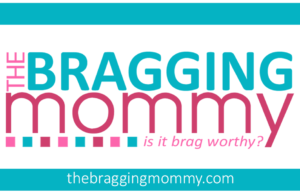
In today’s digital age, smart boards have revolutionized the way educators, businesses, and individuals deliver interactive presentations and lessons. These advanced devices enhance collaboration, engage audiences, and facilitate dynamic content sharing.
But how do you create a smart board? While purchasing a commercially available smart board like HKMLC Smart Whiteboards is a popular option, it’s also possible to build a DIY smart board using affordable components and technology.
In this comprehensive guide, we will explore the steps to create a smart board, the essential tools you need, and why HKMLC whiteboards are an ideal solution for those looking for a professional and advanced interactive experience.
What Is a Smart Board?
A smart board is an interactive whiteboard that connects to a computer and projector, allowing users to interact with digital content using a touch interface or specialized pens. These boards are commonly used in classrooms, corporate settings, and conference rooms to facilitate interactive presentations, lessons, and brainstorming sessions.
Smart boards typically support:
- Touch and gesture controls
- Digital annotation
- Multimedia content sharing
- Real-time collaboration
- Remote learning integration
How to Create a DIY Smart Board
If you are tech-savvy and looking to create a basic smart board, you can do so using off-the-shelf components and open-source software. Here’s a step-by-step guide to building your own interactive smart board:
1. Gather the Necessary Materials
To build a DIY smart board, you will need the following components:
- Projector: To display the content onto a flat surface.
- Computer or Laptop: To run the software and connect to the projector.
- Infrared Pen (IR Pen): A tool that emits infrared signals for touch interaction.
- Wiimote (Nintendo Wii Remote Controller): Acts as a sensor to track the IR pen.
- Bluetooth Adapter: For connecting the Wiimote to your computer.
- Smart Board Software: Free programs like Smoothboard or Open-Sankore for interactive functionality.
2. Set Up the Projector and Computer
- Position the projector to cast the display onto a smooth, white surface such as a whiteboard or blank wall.
- Connect the projector to your computer via HDMI or VGA.
3. Configure the Wiimote Sensor
- Place the Wiimote securely to cover the projected area. Ensure it has a clear line of sight to the surface.
- Connect the Wiimote to your computer using a Bluetooth adapter.
4. Install Smart Board Software
- Download and install interactive whiteboard software such as Smoothboard or Open-Sankore.
- Configure the software to recognize input from the Wiimote.
5. Calibrate the Smart Board
- Use the calibration tool within the software to align the digital display with the touch input.
- Test the system by using the IR pen to interact with the screen.
6. Enhance with Additional Features
- Add virtual whiteboard apps for drawing and annotating.
- Use video conferencing tools like Zoom or Microsoft Teams to enable remote collaboration.
While a DIY smart board can be an exciting project, it may lack the advanced features, durability, and ease of use found in professional smart boards like HKMLC whiteboards.
DIY vs. Professional Smart Boards: Why HKMLC Is the Smarter Choice
Building a DIY smart board may seem cost-effective, but it comes with challenges—technical setup, calibration issues, and hardware limitations. In contrast, HKMLC Smart Whiteboards offer a professional-grade, plug-and-play solution with zero setup hassle. Instead of relying on an infrared pen and Wiimote sensors, HKMLC boards come with built-in ultra-responsive touch technology that ensures seamless interaction
Key Features of HKMLC Smartboards
- Touch and Multi-User Capability: Supports multiple touch points, allowing several users to collaborate simultaneously.
- Ultra HD Display Quality: With 4K Ultra HD resolution, HKMLC Smartboards deliver crystal-clear images and smooth multimedia playback.
- Advanced Software Integration: Fully compatible with Microsoft Office, Google Workspace, and leading learning management systems.
- Seamless Connectivity: Offers Wi-Fi, Bluetooth, USB, and HDMI ports for effortless device integration.
- Interactive Tools: Includes pre-installed software for whiteboarding, annotation, and multimedia presentations.
- Durable Design: Scratch-resistant and anti-glare surfaces for long-term use and superior display clarity.
Why Educators and Businesses Prefer HKMLC Whiteboards
- Enhanced Engagement: Interactive lessons and presentations keep audiences more involved and attentive.
- Efficiency and Productivity: Save and share lesson materials effortlessly with integrated collaboration tools.
- Hybrid Learning Support: Connect with remote participants through video conferencing and screen sharing.
- Ease of Use: Intuitive interfaces and seamless software integration make them accessible for all users.
Advantages of Using HKMLC digital boards Over DIY Solutions
- Reliability: Professional-grade hardware ensures consistent performance without technical glitches.
- Advanced Functionality: Includes cutting-edge features like gesture recognition, cloud storage, and intelligent writing tools.
- Technical Support: Access to professional customer support for troubleshooting and software updates.
- Time-Saving: No need to spend hours building and configuring—start using immediately.
- Scalability: Suitable for large classrooms, conference rooms, and collaborative workspaces.
How HKMLC Smartboards Support Different Learning Environments
- Traditional Classrooms: Facilitate interactive lessons with real-time annotation and multimedia.
- Hybrid and Remote Learning: Integrate with virtual meeting platforms to connect with learners worldwide.
- Corporate Training: Improve employee engagement and knowledge retention through interactive sessions.
- Collaborative Workspaces: Enhance brainstorming and project management with real-time collaboration tools.
DIY or Professional? Making the Right Smart Board Investment
While DIY smart boards can be an exciting experiment, they often fall short in reliability, touch accuracy, and long-term usability. Schools and businesses that require a stable, professional-grade solution should consider investing in HKMLC Smart Whiteboards. These interactive boards eliminate the need for manual setup, offer crystal-clear 4K resolution, and integrate effortlessly with educational and corporate software. For those looking for a hassle-free, scalable, and advanced interactive experience, HKMLC whiteboards remain the top choice




